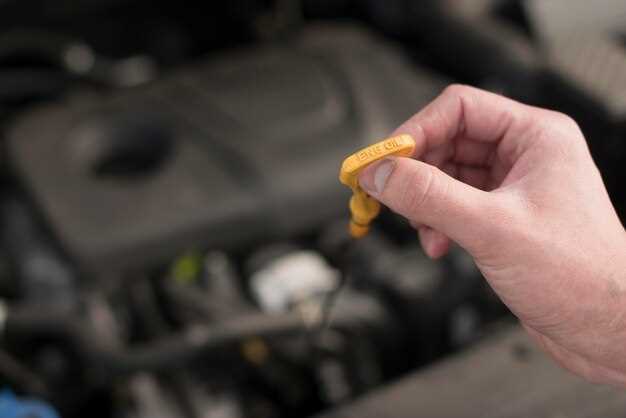How to Properly Launch a Manual Transmission Car


Launching a manual transmission car is an essential skill for any driver who prefers the engaging experience of shifting gears. Understanding the mechanics of launching correctly not only enhances driving enjoyment but also ensures safety on the road. This guide aims to provide a step-by-step approach to launching your manual car smoothly and confidently.
Many new drivers find the process of launching a manual vehicle daunting, often fearing stalling or damaging the engine. However, with practice and the right techniques, you can master the art of launching without any mishaps. This guide will cover important concepts such as clutch control, throttle management, and the significance of understanding your car’s unique characteristics.
Before you start, it’s crucial to familiarize yourself with the general components involved in launching a manual transmission car. This includes knowing the roles of the clutch pedal, gear stick, and accelerator, as well as the importance of coordinating them effectively. By adhering to the steps outlined in this guide, you’ll be able to launch your car safely and with confidence, setting a solid foundation for further driving skills.
Understanding the Clutch Pedal and Its Role
The clutch pedal is a fundamental element of a manual transmission vehicle, serving as the interface between the engine and the drivetrain. Its primary function is to disengage the engine’s power from the wheels, allowing the driver to change gears smoothly without damaging the transmission.
When the driver presses the clutch pedal, it activates a hydraulic or mechanical mechanism that disconnects the engine from the transmission. This disengagement is crucial, especially during gear shifts, as it prevents grinding of gears and allows for a seamless transition between different speed ratios.
Understanding the relationship between the clutch pedal and the engine is essential for effective driving. Releasing the clutch too quickly can cause the vehicle to stall, while holding it down for too long may lead to unnecessary wear on the clutch components. Mastery of the clutch pedal also allows a driver to control the vehicle’s acceleration and deceleration effectively, especially on inclines or when coming to a stop.
The clutch pedal also plays a critical role in starting the vehicle. Most manual cars require the clutch to be engaged before the engine can start. This safety feature ensures that the car does not lurch forward unexpectedly when the engine is turned on.
In summary, the clutch pedal is not merely a pedal but a vital tool that facilitates control over the vehicle’s powertrain. Understanding its function and operation is key to mastering manual driving and ensuring safe vehicle operation.
Finding the Right RPM for a Smooth Start
Choosing the correct RPM for launching a manual transmission car is crucial to achieving a smooth and effective start. Typically, the ideal RPM range for initiating movement will depend on the specific vehicle and its engine characteristics. Most manual transmission vehicles perform optimally in the range of 1,500 to 2,500 RPM for a smooth launch.
Starting at too low an RPM can cause the engine to stall, while a higher RPM might lead to excessive wheel spin, especially on wet or slippery surfaces. To find the right balance, engage the clutch fully and press the accelerator gently until the tachometer reaches the desired RPM range. This allows for a controlled and gradual engagement of power.
Practicing this technique will help you better understand your vehicle’s throttle response and engine behavior. Pay attention to how the vehicle reacts at different RPM levels to determine the sweet spot for a smooth start. Ideally, the engine should provide enough torque to move the car without stalling or jerking.
Additionally, consider external conditions such as the slope of the road and the load you’re carrying. On inclines, a slightly higher RPM might be necessary to prevent rolling backward. In contrast, on flat terrain, you may find that a lower RPM helps to optimize fuel efficiency during your launch.
Finally, always listen to your engine. A well-tuned engine will signal when it’s ready to engage smoothly with the clutch. Developing a good sense of the engine’s performance will enhance your ability to find the right RPM every time you start from a stop.
Mastering the Timing of Shifting Gears
Shifting gears in a manual transmission car requires precise timing to ensure smooth transitions and optimal performance. Understanding the right moment to shift is essential for both efficiency and vehicle longevity.
The key to mastering gear shifting is recognizing the engine’s RPM (revolutions per minute). Each vehicle has a specific RPM range where it operates most efficiently, often indicated by a tachometer. As a general guideline, shift up when the engine reaches around 2,500 to 3,000 RPM for regular driving; this range optimizes fuel efficiency while providing enough power.
When downshifting, timing is equally crucial. You should shift down in response to increases in demand, such as when climbing a hill or during quick deceleration. In these scenarios, downshifting before the RPM drops too low prevents stalling and allows for better control of the vehicle. It’s essential to match the engine speed to the wheels’ speed to avoid jarring shifts, which can lead to mechanical stress.
Practicing your timing in various driving conditions will enhance your skills. Start in ideal conditions and gradually introduce challenges like inclines, declines, or heavy traffic. Familiarizing yourself with the sound and feel of the engine before each shift will help reinforce your timing instincts.
Using the clutch effectively is another aspect of timing. Always press the clutch fully to the floor before shifting gears. This action disengages the engine from the transmission, allowing for a smooth shift. Releasing the clutch too quickly can disrupt the balance and cause a jolt, so aim for a gradual release while simultaneously applying throttle for a seamless engagement.
Maintaining focus on your surroundings and anticipating the need to shift will contribute to mastering this skill. Watch for changes in road conditions, traffic signals, and the vehicle’s performance to better gauge when to shift gears. By consistently practicing and refining your technique, you will gain confidence in your ability to shift gears at the right moments, resulting in a safer and more enjoyable driving experience.
Using the Handbrake for Hill Starts
Starting on a hill can be a daunting task for many drivers using a manual transmission. Utilizing the handbrake effectively can significantly ease this challenge. Here’s a step-by-step guide to mastering hill starts using the handbrake.
Follow these instructions to ensure a smooth and safe hill start:
| Step | Action | Details |
|---|---|---|
| 1 | Engage the Handbrake | Before attempting to move, firmly pull the handbrake up to secure the vehicle on the slope. |
| 2 | Press the Clutch | Fully depress the clutch pedal with your left foot to disengage the gears. |
| 3 | Select the Appropriate Gear | Shift into first gear for a standard hill start. This gear provides the necessary torque to pull away smoothly. |
| 4 | Rev the Engine | Lightly press the accelerator with your right foot to raise the RPMs, typically around 1500-2000 RPMs, which helps prevent stall. |
| 5 | Release the Clutch | Slowly release the clutch until you feel the biting point, where the car begins to want to move forward. |
| 6 | Release the Handbrake | Once you feel the biting point, gradually release the handbrake while simultaneously increasing acceleration. |
| 7 | Fully Release the Clutch | As the car begins to move forward, completely release the clutch and continue to accelerate smoothly. |
Practicing these steps will enhance your confidence and ability to perform hill starts safely and effectively. Remember to always check for traffic and ensure it’s safe to proceed before starting your maneuver. Mastery of the handbrake technique not only improves your hill starts but also increases overall driving skills in challenging conditions.
Avoiding Common Mistakes During Launch
When launching a manual transmission car, avoiding common mistakes is crucial to ensure a smooth and safe start. Here are key tips to help you navigate this process effectively:
1. Neglecting to Use the Clutch Properly: One of the most frequent errors is not fully engaging the clutch before shifting into first gear. Always press the clutch pedal down completely to prevent gear grinding and potential damage to the transmission.
2. Excessive Revving: Many drivers mistakenly rev the engine too high before releasing the clutch. This can lead to excessive wheel spin or a sudden jerk forward. Aim for a balanced engine speed, typically around 1,500 to 2,000 RPM, for a smooth launch.
3. Inadequate Throttle Control: Proper throttle control is essential for a successful launch. Abruptly pressing the accelerator can cause the car to stall or spin the wheels. Gradually apply the throttle while releasing the clutch to achieve a seamless transition.
4. Ignoring the Handbrake: If you’re on an incline, failing to use the handbrake can result in rolling back. Engage the handbrake while you find the bite point, allowing for a more confident launch when you release it.
5. Not Finding the Bite Point: The bite point is the optimal point where the clutch begins to engage. Failing to recognize this will hinder your launch. Practice locating the bite point in a safe environment to enhance your confidence during launches.
6. Overthinking the Process: While it’s vital to be mindful of your actions, overthinking can lead to hesitation and mistakes. Stay relaxed and trust your instincts; practice will increase your efficiency and comfort over time.
By being aware of these common mistakes and implementing corrective actions, you can ensure smoother launches and improve your overall driving experience with a manual transmission car.
Practicing Launch Techniques in Safe Environments

Mastering the launch of a manual transmission car is essential for a smooth driving experience. To enhance your skills effectively, practicing in safe environments is crucial. Here are several strategies to ensure your practice sessions are both effective and safe:
- Choose an Empty Parking Lot:
- Look for a large, flat area with minimal traffic.
- Ensure there are no obstacles such as parked cars or pedestrians.
- Avoid locations with tight spaces that might lead to accidents.
- Use Cones for Marking:
- Set up cones to create a designated practice area.
- Practice launching from different points marked by the cones.
- This helps simulate various scenarios and distances.
- Incorporate Hill Starts:
- Find a gentle slope to practice launching on an incline.
- Focus on mastering the clutch and throttle balance.
- Use the handbrake if necessary to prevent rolling backward.
- Invite a Mentor:
- Have an experienced driver accompany you during practice.
- They can provide feedback and corrections in real-time.
- Consider their advice on techniques and safety practices.
- Practice at Different Times:
- Choose times when traffic is minimal, such as early mornings or late evenings.
- This allows for undisturbed practice sessions.
- Adapting to different conditions improves overall skill.
- Record Your Practice:
- Consider recording your practice sessions for self-analysis.
- Rewatch the footage to identify areas for improvement.
- Look for clutch engagement timing and acceleration techniques.
By selecting appropriate locations and employing effective techniques, you can develop your manual transmission launching skills in a safe and controlled environment. Regular practice will boost your confidence and ensure you are ready for real-world driving situations.
